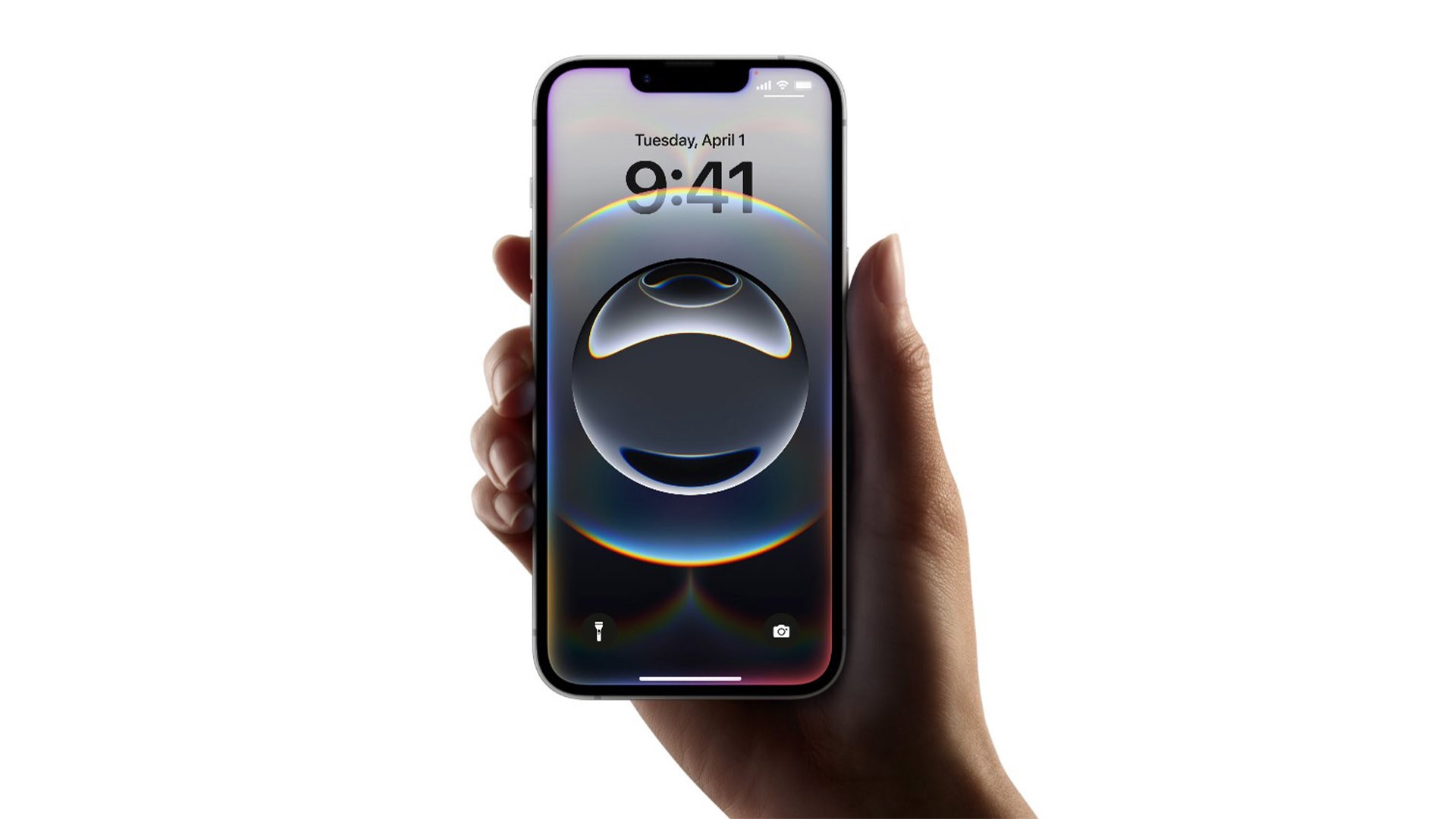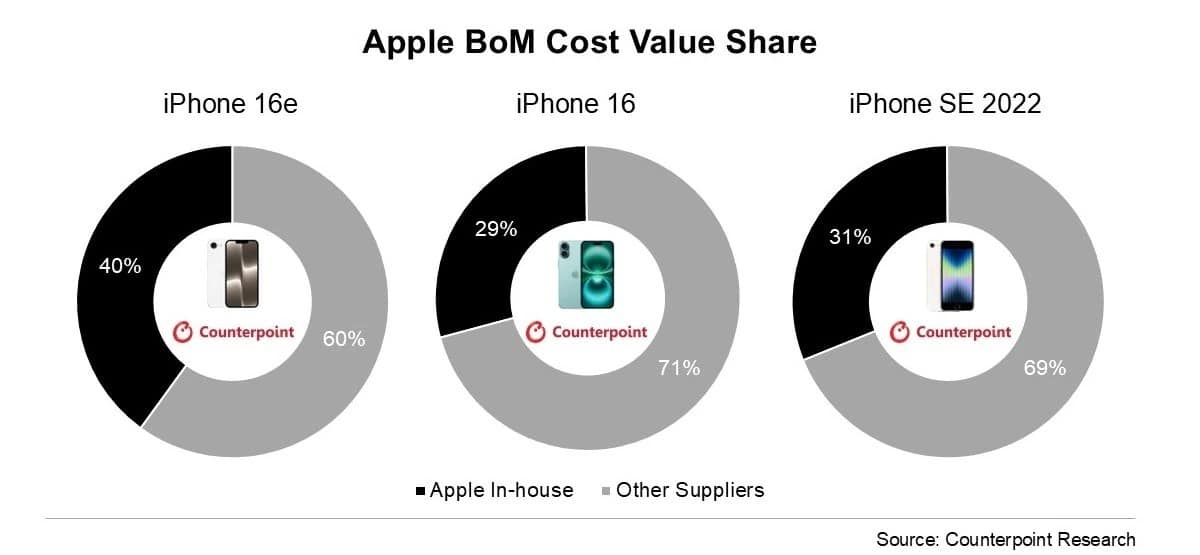

Apple’s latest iPhone 16 series introduced a surprise contender, the iPhone 16e, priced at a competitive $599. Counterpoint Research recently shed light on the component costs of the iPhone 16e, revealing fascinating insights into Apple’s strategic choices.

Apple’s Dominance in Component Manufacturing

Remarkably, 40% of the components in the iPhone 16e are manufactured in-house by Apple, a notable achievement compared to previous models. For context, the iPhone 16 series ranges between 39% to 71% of Apple-manufactured parts, while the 2022 iPhone SE had a 31% to 69% split between Apple and third-party suppliers. This marks a significant shift towards Apple’s self-reliance in production.
The Game-Changing C1 5G Modem
The reduction in part costs is largely attributed to Apple’s innovative C1 5G modem. This modem allows for a $10 savings per device, which scales impressively when considering Apple’s target to sell 22 million units, culminating in a total savings of $220 million. Although the C1 lacks mmWave support, it provides up to 40% better performance compared to the Snapdragon X71 modem used in the iPhone 16 lineup. Its design spans the 4nm and 7nm manufacturing processes, ensuring energy-efficient performance.
Simplifications for Cost Efficiency
Apple’s strategy doesn’t stop at the modem. The iPhone 16e features a simplified design with a single rear camera, and omits hardware like MagSafe, further reducing overall production costs. These strategic simplifications are crucial in maintaining the device’s affordability without compromising on quality.

ENGLİSH
5 gün önceSİGORTA
5 gün önceSİGORTA
6 gün önceSİGORTA
9 gün önceSİGORTA
10 gün önceSİGORTA
10 gün önceDÜNYA
19 gün önce 1
Elon Musk’s Father: “Admiring Putin is Only Natural”
11578 kez okundu
1
Elon Musk’s Father: “Admiring Putin is Only Natural”
11578 kez okundu
 2
xAI’s Grok Chatbot Introduces Memory Feature to Rival ChatGPT and Google Gemini
10648 kez okundu
2
xAI’s Grok Chatbot Introduces Memory Feature to Rival ChatGPT and Google Gemini
10648 kez okundu
 3
7 Essential Foods for Optimal Brain Health
9534 kez okundu
3
7 Essential Foods for Optimal Brain Health
9534 kez okundu
 4
Minnesota’s Proposed Lifeline Auto Insurance Program
9496 kez okundu
4
Minnesota’s Proposed Lifeline Auto Insurance Program
9496 kez okundu
 5
Introducing Vivo Y300 Pro+: A Blend of Power and Affordability
7431 kez okundu
5
Introducing Vivo Y300 Pro+: A Blend of Power and Affordability
7431 kez okundu
Veri politikasındaki amaçlarla sınırlı ve mevzuata uygun şekilde çerez konumlandırmaktayız. Detaylar için veri politikamızı inceleyebilirsiniz.